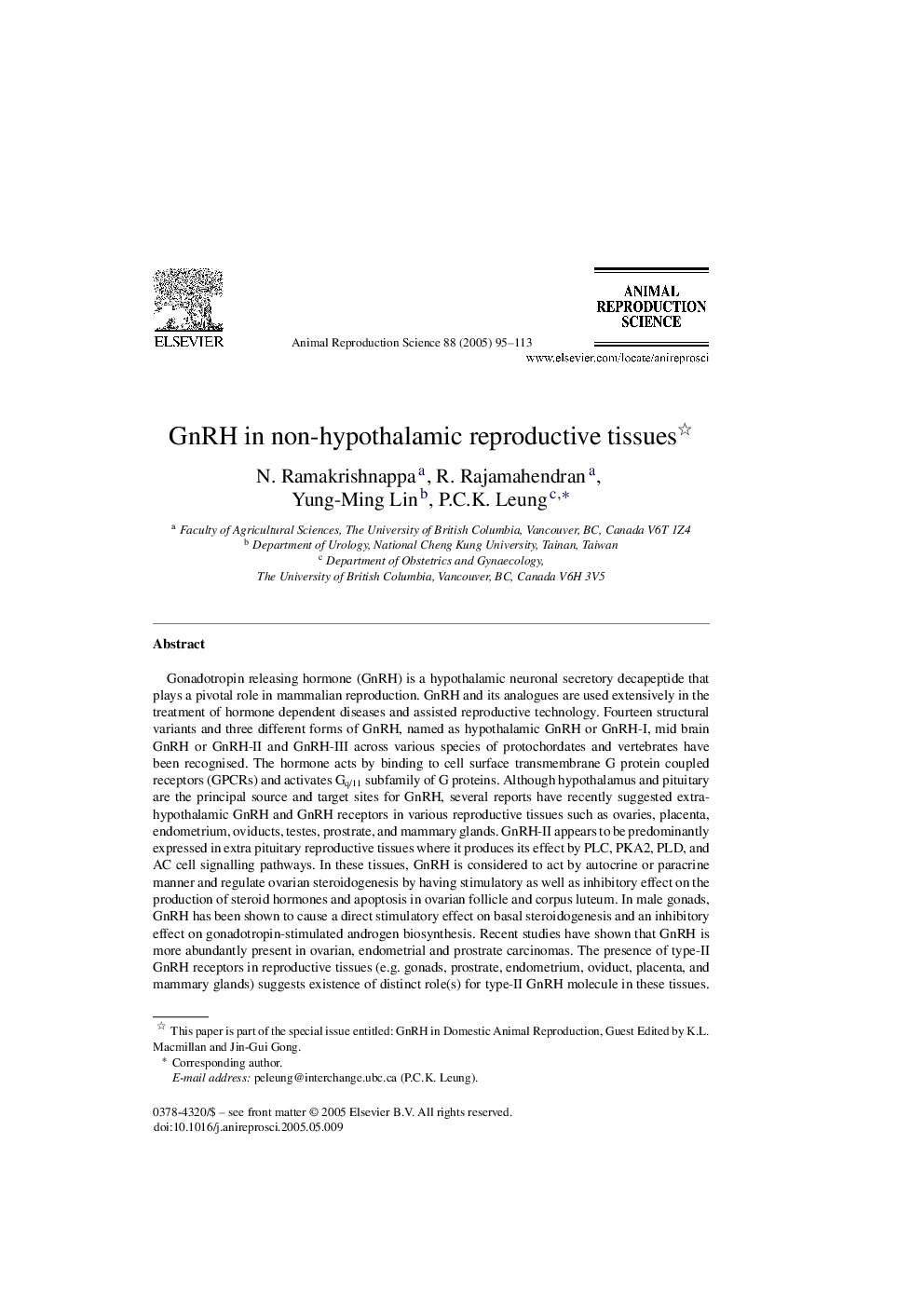| کد مقاله | کد نشریه | سال انتشار | مقاله انگلیسی | نسخه تمام متن |
|---|---|---|---|---|
| 9900288 | 1544838 | 2005 | 19 صفحه PDF | دانلود رایگان |
عنوان انگلیسی مقاله ISI
GnRH in non-hypothalamic reproductive tissues
دانلود مقاله + سفارش ترجمه
دانلود مقاله ISI انگلیسی
رایگان برای ایرانیان
کلمات کلیدی
موضوعات مرتبط
علوم زیستی و بیوفناوری
علوم کشاورزی و بیولوژیک
علوم دامی و جانورشناسی
پیش نمایش صفحه اول مقاله

چکیده انگلیسی
Gonadotropin releasing hormone (GnRH) is a hypothalamic neuronal secretory decapeptide that plays a pivotal role in mammalian reproduction. GnRH and its analogues are used extensively in the treatment of hormone dependent diseases and assisted reproductive technology. Fourteen structural variants and three different forms of GnRH, named as hypothalamic GnRH or GnRH-I, mid brain GnRH or GnRH-II and GnRH-III across various species of protochordates and vertebrates have been recognised. The hormone acts by binding to cell surface transmembrane G protein coupled receptors (GPCRs) and activates Gq/11 subfamily of G proteins. Although hypothalamus and pituitary are the principal source and target sites for GnRH, several reports have recently suggested extra-hypothalamic GnRH and GnRH receptors in various reproductive tissues such as ovaries, placenta, endometrium, oviducts, testes, prostrate, and mammary glands. GnRH-II appears to be predominantly expressed in extra pituitary reproductive tissues where it produces its effect by PLC, PKA2, PLD, and AC cell signalling pathways. In these tissues, GnRH is considered to act by autocrine or paracrine manner and regulate ovarian steroidogenesis by having stimulatory as well as inhibitory effect on the production of steroid hormones and apoptosis in ovarian follicle and corpus luteum. In male gonads, GnRH has been shown to cause a direct stimulatory effect on basal steroidogenesis and an inhibitory effect on gonadotropin-stimulated androgen biosynthesis. Recent studies have shown that GnRH is more abundantly present in ovarian, endometrial and prostrate carcinomas. The presence of type-II GnRH receptors in reproductive tissues (e.g. gonads, prostrate, endometrium, oviduct, placenta, and mammary glands) suggests existence of distinct role(s) for type-II GnRH molecule in these tissues. The existence of different GnRH forms indicates the presence of distinctive cognate receptors types in vertebrates and is a productive area of research and may contribute to the development of new generation of GnRH analogues with highly selective and controlled action on different reproductive tissues and the target-specific GnRH analogues could be developed.
ناشر
Database: Elsevier - ScienceDirect (ساینس دایرکت)
Journal: Animal Reproduction Science - Volume 88, Issues 1â2, August 2005, Pages 95-113
Journal: Animal Reproduction Science - Volume 88, Issues 1â2, August 2005, Pages 95-113
نویسندگان
N. Ramakrishnappa, R. Rajamahendran, Yung-Ming Lin, P.C.K. Leung,